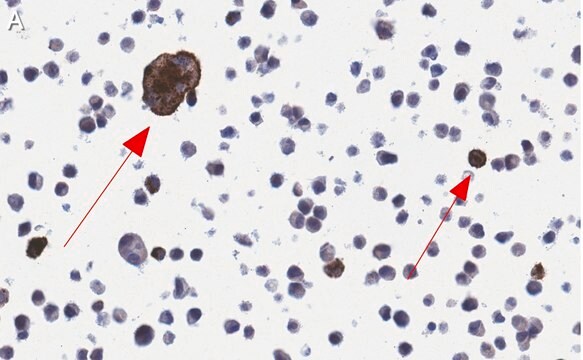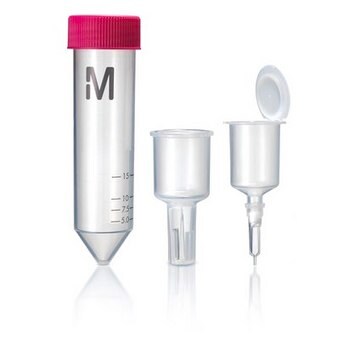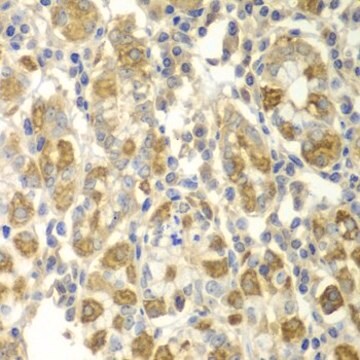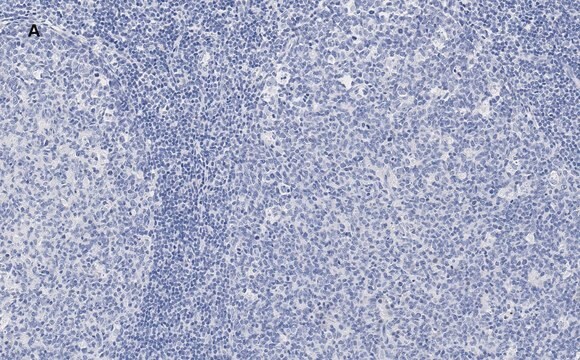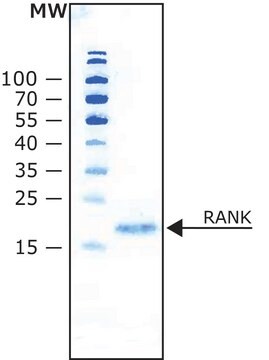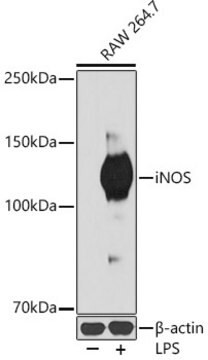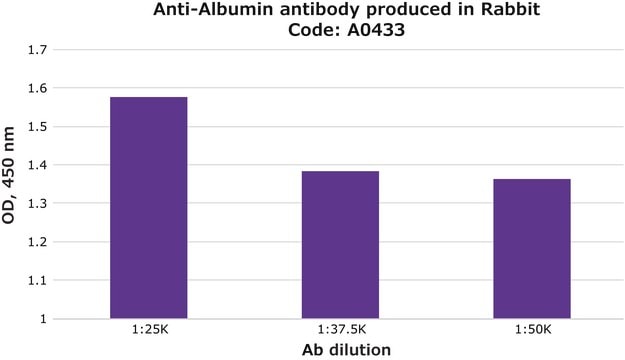詳細
We are committed to bringing you greener alternative products, which adhere to one or more of The 12 Principles of Green Chemistry.This antibody is Preservative-free, produced without the harm or sacrifice of animals and exceptionally stable to allow for ambient shipping and storage if needed and thus aligns with "Waste Prevention", "Designing Safer Chemicals" and "Design for Energy Efficiency".
Click here for more information.
ZooMAb® antibodies represent an entirely new generation of recombinant monoclonal antibodies. Each ZooMAb® antibody is manufactured using our proprietary recombinant expression system, purified to homogeneity, and precisely dispensed to produce robust and highly reproducible lot-to-lot consistency. Only top-performing clones are released for use by researchers. Each antibody is validated for high specificity and affinity across multiple applications, including its most commonly used application. ZooMAb® antibodies are reliably available and ready to ship when you need them.
特異性
Clone 1H17 is a ZooMAb® rabbit recombinant monoclonal antibody that specifically detects RANKL/TNFSF11. It targets an epitope within 18 amino acids from the N-terminal region.
免疫原
KLH-conjugated linear peptide corresponding to 18 amino acids from the N-terminal region of human Tumor necrosis factor ligand superfamily member 11 (RANKL).
アプリケーション
Quality Control Testing
Evaluated by Western Blotting in Human small intestine tissue lysate.
Western Blotting Analysis: A 1:1,000 dilution of this antibody detected RANKL/TNFSF11 in Human small intestine tissue lysate.
Tested Applications
Western Blotting Analysis: A 1:1,000 dilution from a representative lot detected RANKL/TNFSF11 in Human lymph node tissue lysate.
Immunohistochemistry (Paraffin) Analysis: A 1:100 dilution from a representative lot detected RANKL/TNFSF11 in Human small intestine tissue sections.
Affinity Binding Assay: A representative lot of this antibody bound RANKL/TNFSF11 peptide with a KD of 4.7 x 10-7 in an affinity binding assay.
Note: Actual optimal working dilutions must be determined by end user as specimens, and experimental conditions may vary with the end user.
ターゲットの説明
Tumor necrosis factor ligand superfamily member 11 (UniProt: O14788; also known as Osteoclast differentiation factor, ODF, Osteoprotegerin ligand, OPGL, Receptor activator of NuCLEAR™ factor kappa-B ligand, RANKL, TNF-related activation-induced cytokine, TRANCE, CD254) is encoded by the TNFSF11 (also known as OPGL, RANKL, TRANCE) gene (Gene ID: 8600) in human. RANKL is a single-pass type II membrane protein with a cytoplasmic domain (aa 1-47), a transmembrane domain (aa 48-68) and an extracellular domain (aa 69-317). It is a cytokine that binds to TNFRSF11B/OPG and to NFRSF11A/RANK. It is found in high levels in the peripheral lymph nodes and in lower levels in the spleen, peripheral blood leukocytes, bone marrow, heart, placenta, skeletal muscle, stomach, and thyroid. Its levels are up-regulated by T-cell receptor stimulation. RANKL has been reported to affect the immune system and control bone regeneration and remodeling. It is shown to augment the ability of dendritic cells to stimulate naive T-cell proliferation and is an important regulator of interactions between T-cells and dendritic cells. It may also play a role in the regulation of the T-cell-dependent immune response. It is shown to induce osteoclastogenesis by activating multiple signaling pathways in osteoclast precursor cells. RANKL is also reported to activate Akt through a signaling complex involving SRC kinase and tumor necrosis factor receptor-associated factor (TRAF) 6, which suggests a role of RANKL in the regulation of cell apoptosis. Three isoforms of RANKL have been described that are produced by alternative splicing. Defects in TNFS11 gene can cause osteoporosis, both a severe autosomal recessive form as well a benign autosomal dominant form. This ZooMAb® recombinant monoclonal antibody, generated by our propriety technology, offers significantly enhanced specificity, Affinity™, reproducibility, and stability over conventional monoclonals. (Ref.: Ono, T., et al. (2020). Inflamm. Regen. 40; Article 2; Luan, X., et al. (2012). J. Immunol. 189(1); 245-252).
物理的形状
Purified recombinant rabbit monoclonal antibody IgG, lyophilized in PBS, 5% Trehalose, normal appearance a coarse or translucent resin. The PBS/trehalose components in the ZooMAb formulation can have the appearance of a semi-solid (bead like gel) after lyophilization. This is a normal phenomenon. Please follow the recommended reconstitution procedure in the data sheet to dissolve the semi-solid, bead-like, gel-appearing material. The resulting antibody solution is completely stable and functional as proven by full functional testing. Contains no biocide or preservatives, such as azide, or any animal by-products. Larger pack sizes provided as multiples of 25 µL.
再構成
300 µg/mL after reconstitution at 25 µL per vial. Please refer to guidance on suggested starting dilutions and/or titers per application and sample type.
保管および安定性
Recommend storage of lyophilized product at 2-8°C; Before reconstitution, micro-centrifuge vials briefly to spin down material to bottom of the vial; Reconstitute each vial by adding 25 µL of filtered lab grade water or PBS; Reconstituted antibodies can be stored at 2-8°C, or -20°C for long term storage. Avoid repeated freeze-thaws.
その他情報
Concentration: Please refer to the Certificate of Analysis for the lot-specific concentration.
法的情報
Affinity is a trademark of Mine Safety Appliances Co.
NuCLEAR is a trademark of Sigma-Aldrich Co. LLC
ZooMAb is a registered trademark of Merck KGaA, Darmstadt, Germany
免責事項
Unless otherwise stated in our catalog or other company documentation accompanying the product(s), our products are intended for research use only and are not to be used for any other purpose, which includes but is not limited to, unauthorized commercial uses, in vitro diagnostic uses, ex vivo or in vivo therapeutic uses or any type of consumption or application to humans or animals.


